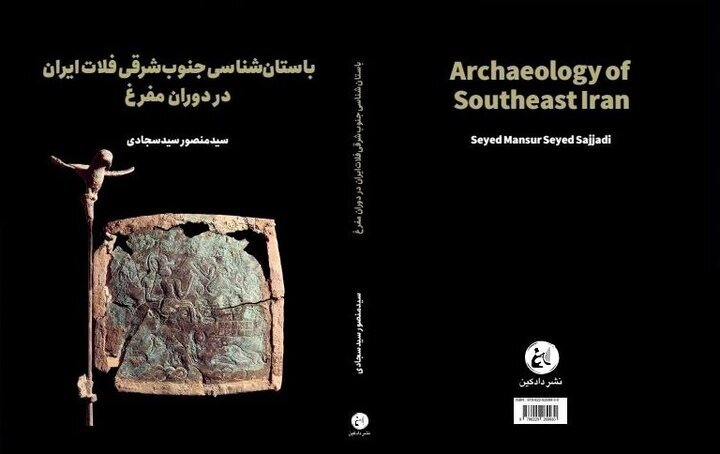Seasoned archaeologist releases ‘Archaeology of Southeast Iran’

TEHRAN – The esteemed Iranian archaeologist, Seyyed Mansour Seyyed Sajjadi, has recently published a comprehensive book titled “Archaeology of Southeast Iran”.
The 509-page book, in particular, delves into lesser-explored sites and ancient human civilizations that once flourished inside the southeastern Iranian Plateau and neighboring areas, Mehr reported.
“In a significant contribution to the realm of archaeology, the book sheds light on the often-overlooked ancient civilization of southeast Iran, which has remained concealed from researchers' perspectives,” the report said.
Some scholars suggest that around five thousand years ago, in the Western Asia region, two major centers of agriculture and significant cohabitation existed - the Mesopotamian region on one side and the Sindh Valley on the other. This belief has led to the late and scarce exploration of the magnificent and expansive civilizations in Southeast Iran.
Seyyed Mansour Seyyed Sajjadi, a scholar with expertise in archaeology and art history, received his education from the Faculty of Literature and Humanities at the University of Tehran. He further pursued his Ph.D. in Iranian Studies with a focus on archaeology at the University of Naples in Italy.
Seyyed Sajjadi, having been a member of numerous archaeological groups both within and outside the country, has overseen projects at significant sites such as Tepe Bamboor, Tepe Talab-Khan, Kooh Khajeh, and Dehaneh-ye Gholaman.
Since 1997, Seyyed Sajjadi has been leading the archaeological group in charge of the UNESCO-designated Burnt City, contributing to the field with over 350 articles, research papers, authored works, and translations in the domains of Iranian studies and archaeology, spanning multiple languages including Italian and Russian.
Recently, following an array of research and tests, Seyyed Sajjadi and his team proposed that the earliest period of human settlement in Burnt City might have occurred in about 3500 BC, more than 300 years before what was previously thought.
“In recent research and tests, based on the evidence and findings, we found out that the burnt city, contrary to what we thought, does not belong to 3200 BC,” the archaeologist said.
“The site is at least 300 years older than what we thought, which means that this city was founded at least 3500 BC.”
Located at the junction of Bronze Age trade routes crossing the Iranian plateau, the remains of the mud brick city bear witness to the emergence of the first complex societies in eastern Iran.
Also known as Shahr-e Sukhteh, or Shahr-i Sokhta, Burnt City is associated with four rounds of civilization, all burnt down by catastrophic sets of fire. The site is situated in the Sistan-Baluchestan province, which was once a junction of Bronze-Age trade routes crossing the Iranian plateau.
According to the UN cultural body, changes in water courses and climate change led to the eventual abandonment of the city in the early second millennium. The structures, burial grounds, and a large number of significant artifacts unearthed there and their well-preserved state due to the desert climate make this site a rich source of information regarding the emergence of complex societies and contacts between them in the third millennium BC.
Burnt City was populated during four main periods up to 1800 BC. Previous rounds of excavations showed that its residents had great skills in weaving, and creating fine arts such as decorative objects, stone carving, and pottery painting.
AFM
